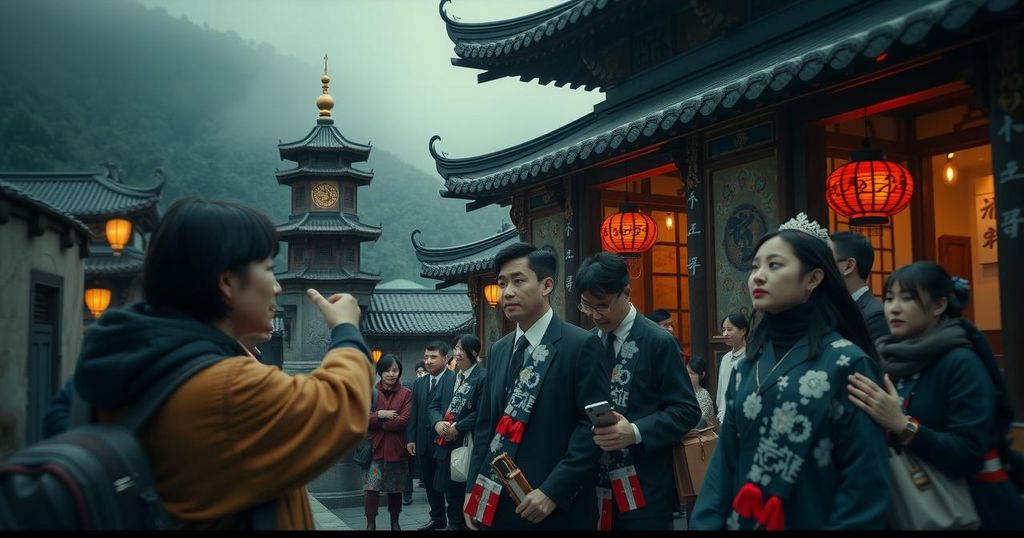The article details the cultural exchange between China and the U.S. showcased during the premiere of Robert Zemeckis’s film “Here” at the Golden Rooster Film Festival. It highlights how cinema serves as a bridge for communication and understanding between the two nations, as filmmakers navigate challenges while embracing technological innovations. The ongoing conversation about the evolving film industry illustrates the importance of storytelling in fostering mutual appreciation and collaboration.
In a picturesque coastal city of Xiamen, China, the spirit of cinema converged with nostalgia as director Robert Zemeckis premiered his latest film “Here,” featuring stars Tom Hanks and Robin Wright. This cinematic journey, paying homage to the beloved classic “Forrest Gump,” transcends time, embodying universal themes of love and dreams. The event, held during the 2024 China Golden Rooster and Hundred Flowers Film Festival, epitomizes the vibrant exchange of culture and art between China and the United States.
The film festival became more than just a screening venue; it was a pulsating forum for artistic dialogue. After attending the premiere, 27-year-old film enthusiast Wang Yanglin expressed, “Forrest’s optimism has always inspired me through the tough times in my life… today’s new film touches on a similar theme — chasing dreams fearlessly because time truly flies.” With a heartwarming backdrop of shared cinematic heritage, the festival offered a platform for filmmakers from both nations to engage in meaningful discussions about their craft.
During a seminar, Zemeckis highlighted the innovative digital makeup technology utilized in “Here,” a revolutionary technique that has evolved dramatically over the past few years. “We were truly at the perfect place and the perfect time to make this film,” he said. His reflections resonated with Chen Kaige, the acclaimed Chinese director who remarked on the bittersweet essence of storytelling that bridges cultures and timelines, stating, “At the end of the day, all human artistic activities revolve around humanity.”
As traditional cinema faces fierce competition from the surging popularity of online content, both the Chinese and American film industries confront common challenges. Liang Junjian, an associate professor at Tsinghua University, pointed out, “After the pandemic, this shift in consumption habits has posed challenges for the film industries in both countries.” Despite these hurdles, opportunities for collaboration have emerged, such as the China Film Joint Pavilion at the American Film Market, which showcased an array of Chinese films to enthusiastic industry professionals.
As the exchange of cinematic works between China and the U.S. continues to flourish, film remains a powerful medium for cultural connection. Remarkably, the success of movies like “Hero” and “The Wandering Earth” demonstrates China’s growing presence in Hollywood. Renowned critic Raymond Zhou articulated this sentiment well: “Film plays an indispensable role in facilitating China-U.S. cultural and people-to-people exchanges.”
The exciting nature of these exchanges culminated at the film festival where emerging filmmakers explored new paths for storytelling. Young American director Edward Drake beautifully described the juxtaposition of Eastern and Western filmmaking perspectives, saying, “It’s fascinating to see two incredibly different filmmakers… united by their shared commitment to telling great stories about the human condition.”
Through these exchanges and innovations, the magic of cinema breathes life into the intricate tapestry of China-U.S. cultural ties.
The article revolves around the significant cultural exchange facilitated by cinema between China and the United States, highlighted by the premiere of Robert Zemeckis’s film “Here” at the 2024 China Golden Rooster and Hundred Flowers Film Festival. It reflects on how filmmaking transcends national boundaries, allowing filmmakers from diverse backgrounds to share stories rooted in humanity. The backdrop of evolving technology in filmmaking, alongside emerging challenges faced by the cinematic world due to shifting viewer habits, is also explored, showcasing the dynamic interplay between tradition and digital innovation in both film industries.
The intersection of cinematic artistry and technological advancements is forging a vibrant dialogue between Chinese and American filmmakers, encapsulated in events like the Golden Rooster Film Festival. As both nations face similar challenges within their film industries, this evolving relationship presents ample opportunities for collaboration and cultural understanding. Ultimately, through storytelling, our shared humanity shines bright, transcending borders and weaving a narrative of connection.
Original Source: english.news.cn



